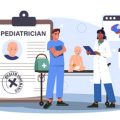Overview of Dysphagia in Neurodegenerative Diseases
Dysphagia, or difficulty swallowing, is a common problem for people living with neurodegenerative diseases in the United States. This condition can affect how safely and efficiently someone can eat or drink, leading to health risks like choking or malnutrition. Understanding dysphagia is especially important for patients, families, and healthcare professionals working with those who have conditions such as Parkinson’s disease, amyotrophic lateral sclerosis (ALS), and dementia.
What is Dysphagia?
Dysphagia means having trouble swallowing food, liquids, or even saliva. It can happen at any stage of swallowing—from moving food around in the mouth to actually getting it down into the stomach. For people with neurodegenerative diseases, muscles involved in swallowing may become weak or uncoordinated, making eating and drinking challenging.
Prevalence of Dysphagia in the U.S.
Many Americans living with neurodegenerative diseases will experience dysphagia at some point. Here is a look at how often dysphagia occurs among some of the most common conditions:
| Condition | Estimated Prevalence of Dysphagia | U.S. Context |
|---|---|---|
| Parkinson’s Disease | 40-80% | Affects up to 1 million Americans; swallowing issues often develop as disease progresses |
| Amyotrophic Lateral Sclerosis (ALS) | 30-85% | About 18,000 Americans are currently living with ALS; most will experience dysphagia during their illness |
| Dementia (including Alzheimer’s) | 13-57% | An estimated 6 million Americans have Alzheimer’s; swallowing problems increase as memory and motor skills decline |
Why Does This Matter?
Dysphagia can lead to serious complications like aspiration pneumonia (when food or drink goes into the lungs), dehydration, weight loss, and social isolation. Early recognition and management are crucial for maintaining quality of life.
Recognizing Signs of Dysphagia
Common signs include coughing or choking while eating, feeling like food is stuck in the throat, unexplained weight loss, and frequent chest infections. If you notice these signs in yourself or a loved one living with a neurodegenerative disease, talk to your healthcare provider about possible next steps.
2. Diagnosis and Assessment in the American Healthcare System
Standard Screening Protocols for Dysphagia
In the United States, early identification of dysphagia in patients with neurodegenerative diseases is crucial for preventing complications such as aspiration pneumonia and malnutrition. Healthcare providers commonly use standardized screening protocols to detect swallowing difficulties. These protocols are designed to be quick, reliable, and easily administered by nurses or other trained staff at the bedside.
| Screening Tool | Description | Who Administers? |
|---|---|---|
| Bedside Swallow Evaluation | A basic test to check if a patient can safely swallow water or food without choking or coughing. | Nurses, Speech-Language Pathologists (SLPs) |
| Modified Barium Swallow Study (MBSS) | An X-ray procedure that shows how food and liquids move through the throat during swallowing. | SLPs, Radiologists |
| Fiberoptic Endoscopic Evaluation of Swallowing (FEES) | A small camera is passed through the nose to watch how well a person swallows different foods and liquids. | SLPs, Physicians |
The Multidisciplinary Approach
Dysphagia management in the U.S. healthcare system involves a team-based approach. Since swallowing problems can have many causes and effects, working together helps provide better care. The core team often includes:
- Speech-Language Pathologists (SLPs): Lead assessment and therapy for swallowing difficulties.
- Physicians: Diagnose underlying neurodegenerative diseases and manage overall medical care.
- Nurses: Monitor daily swallowing safety and hydration status.
- Dietitians: Advise on nutrition plans that match the patient’s swallowing abilities.
- Occupational Therapists: Help patients adapt mealtime routines and equipment for safety.
The Role of Speech-Language Pathologists in the U.S.
Speech-language pathologists (SLPs) play a central role in diagnosing and managing dysphagia. In America, SLPs are licensed professionals who specialize in communication and swallowing disorders. Their responsibilities include:
- Performing detailed swallowing assessments using clinical exams and instrumental tests like MBSS or FEES
- Developing individualized treatment plans focused on safe eating and drinking strategies
- Educating patients, families, and caregivers about signs of dysphagia and ways to reduce risks at home
- Collaborating closely with other healthcare team members to monitor progress and adjust care as needed
Cultural Considerations in the U.S.
The American healthcare system values patient-centered care and shared decision-making. SLPs work with diverse populations, so they consider cultural food preferences, family involvement, insurance coverage, and health literacy when developing assessment plans. This ensures that each patient receives practical recommendations that fit their lifestyle within the unique context of American culture.
![]()
3. Evidence-Based Treatment Strategies
Overview of Therapeutic Interventions
Managing dysphagia in patients with neurodegenerative diseases requires a combination of evidence-based therapeutic interventions and compensatory techniques, tailored to each patient’s specific needs. In the United States, clinicians often use a multidisciplinary approach, involving speech-language pathologists (SLPs), occupational therapists, nutritionists, and physicians. The goal is to improve safety, maintain adequate nutrition, and enhance quality of life.
Commonly Used Interventions in U.S. Clinical Settings
Direct Therapy Techniques
Direct therapy involves exercises and practices that target swallowing muscles or strategies for safer swallowing. These are usually guided by an SLP after thorough evaluation.
| Intervention | Description | Typical Use |
|---|---|---|
| Oral Motor Exercises | Exercises to strengthen lips, tongue, and throat muscles | Mild to moderate dysphagia; often used in ALS and Parkinsons disease |
| Swallow Maneuvers (e.g., Mendelsohn maneuver, effortful swallow) | Specific swallowing techniques taught to improve coordination and airway protection | Recommended after instrumental assessment confirms their effectiveness for the individual |
| Sensory Enhancement (e.g., cold or sour bolus) | Stimulating the swallow reflex by altering taste or temperature of food/liquid | Useful for patients with delayed swallow initiation |
Compensatory Techniques
These methods help patients cope with swallowing difficulties rather than directly improving muscle function. They are widely used in U.S. settings for safety and comfort.
| Technique | Description | When Used |
|---|---|---|
| Postural Adjustments (e.g., chin tuck, head turn) | Changing head or body position to protect the airway during swallowing | Often recommended for patients with aspiration risk or specific pharyngeal deficits |
| Diet Modifications (e.g., thickened liquids, pureed foods) | Altering texture or consistency of food and drinks to reduce choking risk | A standard intervention for those with significant swallowing impairment in dementia or advanced neurological conditions |
| Pacing and Small Bites/Sips | Encouraging slow eating and drinking with smaller amounts at a time | Helpful for individuals who fatigue quickly or have poor coordination during meals |
| Adaptive Equipment (e.g., special cups, utensils) | Using tools designed to make self-feeding easier and safer | Useful for patients with reduced hand strength or tremors, common in Parkinson’s disease and ALS |
Patient-Specific Recommendations
Treatment plans must be personalized based on the type of neurodegenerative disease, severity of dysphagia, cognitive status, and patient preferences. Family education and involvement are crucial in the U.S., where home care is often integrated into the treatment plan. Regular re-evaluation ensures interventions remain appropriate as the condition progresses. Collaboration between healthcare providers and caregivers supports better outcomes and improves quality of life for both patients and their families.
4. Nutrition and Safe Swallowing in the U.S.
Understanding Dietary Modifications
For patients with neurodegenerative diseases who struggle with dysphagia (difficulty swallowing), making changes to the diet is a key part of staying safe and healthy. In the United States, healthcare providers follow specific guidelines to help patients eat safely and get enough nutrition. These guidelines often come from organizations like the American Speech-Language-Hearing Association (ASHA) and are tailored to fit American eating habits and food choices.
Common Types of Diets for Dysphagia
| Diet Level | Description | Examples of Foods |
|---|---|---|
| Puréed | Smooth, no lumps, pudding-like texture | Mashed potatoes, applesauce, yogurt |
| Mechanical Soft | Soft, moist, easily chewed foods | Scrambled eggs, canned peaches, well-cooked pasta |
| Advanced/Regular with Modifications | Nearly regular foods with some restrictions on hard, sticky, or crunchy items | Tender meats, cooked vegetables, soft breads |
The Role of Thickened Liquids
Thin liquids like water, coffee, or juice can be hard to swallow safely for many people with dysphagia because they may “go down the wrong way” and cause choking or aspiration. In the U.S., speech-language pathologists often recommend thickening agents that can be mixed into drinks to make them safer. There are three main consistencies:
- Nectar-thick: Similar to a smoothie or tomato juice; flows off a spoon but more slowly than water.
- Honey-thick: Pours slowly off a spoon; thicker than nectar but not quite solid.
- Pudding-thick: Holds its shape on a spoon; does not pour at all.
You can find commercial thickening powders or gels in most American pharmacies and grocery stores. Always follow your healthcare provider’s recommendations about which consistency is best for you or your loved one.
Working with Registered Dietitians in the U.S.
Registered dietitians (RDs) play an important role in helping patients with neurodegenerative diseases manage dysphagia. In the U.S., RDs work closely with speech-language pathologists and doctors to create meal plans that provide enough calories, protein, vitamins, and minerals while keeping meals safe to swallow. They also help families and caregivers adapt traditional American recipes so they fit each person’s swallowing needs.
Tips for Caregivers and Patients in America
- Check food labels: Look for hidden ingredients that could affect swallowing safety, such as nuts or seeds.
- Avoid dry foods: Opt for moist options like casseroles or stews instead of crackers or chips.
- Use adaptive utensils: Special plates, cups, and spoons can make eating easier and safer.
- Create a calm mealtime environment: Minimize distractions at the table to help focus on swallowing safely.
- Don’t hesitate to ask for help: In the U.S., there are support groups and community resources for both patients and caregivers dealing with dysphagia.
5. Caregiver Education and Support Resources
Overview of Training for Caregivers
Caring for someone with dysphagia due to a neurodegenerative disease can be challenging. In the U.S., there are many training programs available to help caregivers understand how to manage swallowing difficulties safely. These trainings often cover topics such as preparing appropriate food textures, using adaptive feeding techniques, and recognizing signs of aspiration. Many hospitals and rehabilitation centers offer in-person classes, while online courses are also widely accessible for those who prefer learning from home.
Support Groups for Caregivers and Patients
Support groups can provide emotional support, practical advice, and a sense of community for both caregivers and patients. In the United States, these groups are available both in-person and online, making it easier for people from different backgrounds and regions to connect. Some groups focus specifically on certain diseases like Parkinson’s or ALS, while others address general issues related to dysphagia and caregiving.
| Organization/Group | Type | How to Access | Cultural Relevance |
|---|---|---|---|
| ALS Association Support Groups | Disease-specific (ALS) | Online & Local Chapters | Materials available in multiple languages; culturally sensitive outreach programs |
| Parkinson’s Foundation Helpline & Groups | Disease-specific (Parkinson’s) | Toll-Free Helpline & Community Events | Bilingual staff; diverse community partnerships |
| Family Caregiver Alliance (FCA) | General caregiving | Website resources & webinars | Resources tailored for African American, Hispanic/Latino, Asian American, and LGBTQ+ families |
| Alzheimer’s Association Support Groups | Disease-specific (Alzheimer’s) | Local chapters & virtual meetings | Culturally specific support groups and educational materials available |
| Dysphagia Cafe Community Forum | Dysphagia-focused forum | Online discussion boards | Open access; inclusive environment for all backgrounds |
National Organizations Providing Resources and Advocacy
The following national organizations play a key role in providing information, advocacy, and resources that are relevant across the diverse cultures found in the U.S.:
- The ALS Association: Offers caregiver guides, local chapter support, and culturally relevant information in Spanish and other languages.
- Parkinson’s Foundation: Provides free educational materials, a helpline staffed by bilingual professionals, and culturally inclusive outreach programs.
- Family Caregiver Alliance (FCA): Features an extensive library of articles, videos, and webinars covering diverse cultural perspectives on caregiving.
- Alzheimer’s Association: Has resources designed for multicultural communities including African American, Hispanic/Latino, Asian American, and Native American families.
- Dysphagia Research Society: Shares evidence-based updates and hosts annual conferences with sessions addressing cultural competence in dysphagia care.
Culturally Relevant Resources in the United States
The U.S. is home to people from many cultures, so it is important that caregiver education includes culturally sensitive resources. Many organizations now provide materials in multiple languages such as Spanish, Chinese, and Vietnamese. There are also community health workers and bilingual support staff available in larger cities who can help bridge language barriers. Faith-based groups and local cultural associations may also offer support tailored to specific communities.
Key Takeaways for Caregivers:
- Seek out training opportunities—many are free or low-cost through hospitals or online platforms.
- Join support groups that fit your needs—whether by disease type or cultural background.
- Use national organizations as a resource hub for up-to-date information and advocacy.
- If language or culture is a barrier, ask organizations about materials or services in your preferred language.


